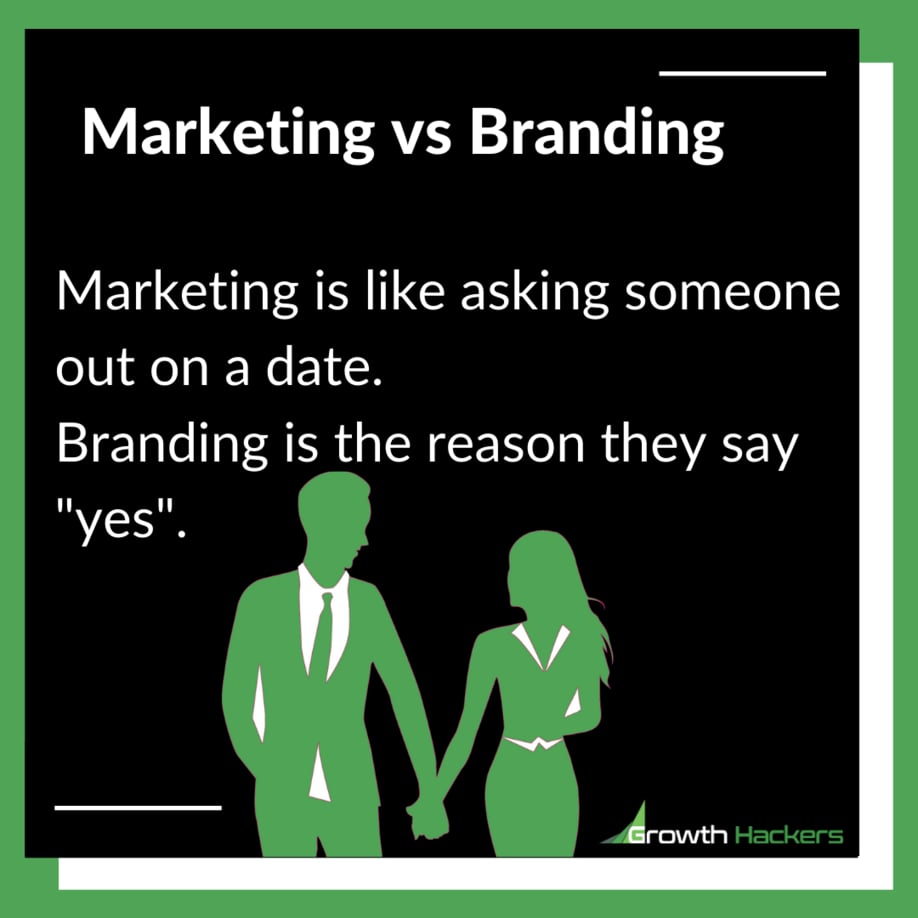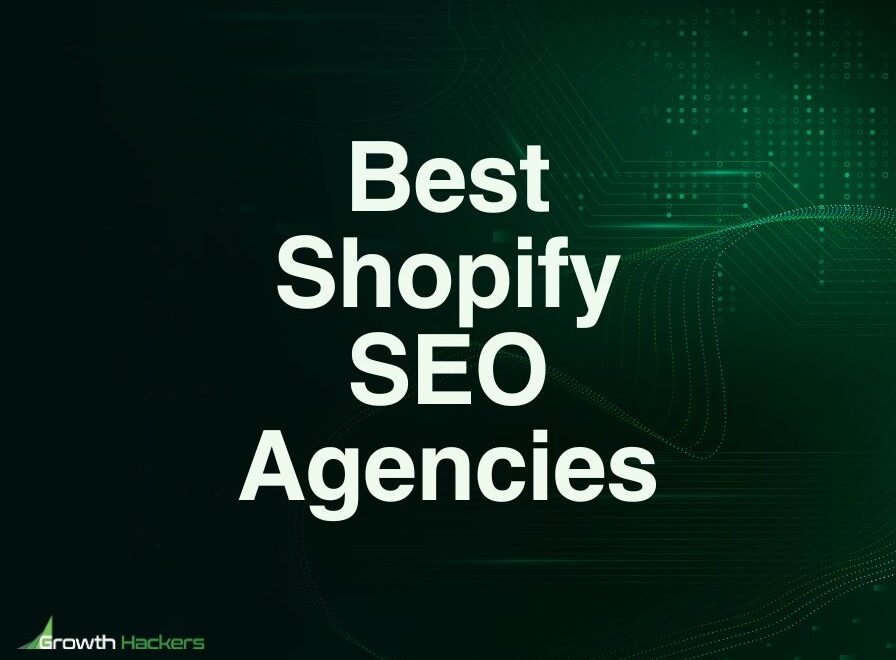A recent survey found that 81% of consumers need to establish trust in a brand before they feel ready to buy from them. Without an authentic and trustworthy brand identity, a business’ top-line growth is going to be held back. Today, marketing teams find themselves divided between having to prioritize growth marketing and brand marketing. The challenge is in striking the right balance between these two all-important aspects of a company’s marketing efforts—to prioritize one over the other comes with negative consequences that can stymie growth. In this article, we’ll take a look at both of these key marketing strategies, explain their respective differences, and discuss actionable tips for balancing both equally within your organization.
Brand Marketing vs. Growth Marketing: What’s the Difference?
Brand marketing and growth marketing are complementary marketing strategies that are essential to a business’s development. Below, we’ve touched on the fundamentals of each strategy and why they are essential for building a successful enterprise.
Brand Marketing 101
Brand marketing is the promotion of products or services in such a way that showcases one’s overall brand image or identity. Overarching goals of brand marketing include: ● Linking a company’s values with its visible personality and external communications ● Building a brand’s value in the eyes of the consumer ● Creating symbols, slogans, logos, and color schemes that make a brand identifiable ● Establishing trust with one’s audience via brand messaging For example, Instagram marketing is one popular avenue of brand marketing. With over 1 billion active users, Instagram is an excellent resource for businesses wanting to establish a digital presence and put their brand in front of a massive potential audience. Plus, Instagram’s user base is nearly 90% non-U.S. based, which makes it a golden opportunity for connecting with international markets. Overall, brand marketing tells a story about what the company can offer the consumer. Brands such as Lexus and Tesla, for instance, tell a story about luxury while the latter also focuses on environmental sustainability and high technology.Growth Marketing 101
Growth marketing picks up where brand marketing leaves off. Whereas brand marketing is focused on creating an identity, presence, and “story” that the consumer can trust, growth marketing is focused on using one’s already established brand to attract and retain customers. Growth marketing isn’t concerned with any particular point of the marketing funnel. Instead, it’s about managing the customer experience throughout their lifecycle to keep them engaged and attracted to the services and products offered by the company. You can think of growth marketing as being dependent on brand marketing. You cannot have one without the other. This is because a central goal of growth marketing is to capitalize on one’s brand awareness to create a positive whole-funnel brand experience for the consumer. Marketing vs Branding: which one should you pick? Don't prioritize one over the other. Both are as important but have different goals. You should work on your growth marketing strategy to achieve short-term wins and goals but work on your branding strategy to build a memorable brand that will last.
Building Marketing and Development Teams That Work
Ultimately, your development team plays a central role in your brand identity as well. If you’re making iOS products, for example, you’re going to have to know how to hire a Swift developer to get a high-quality, trustworthy product to market. Releasing quality products is a key pillar in developing a brand identity that consumers trust. These days, marketing teams operate in increasingly remote work environments. To manage a successful brand launch or design a growth marketing strategy, you need to be able to manage a remote marketing department. All successful remote teams should be structured within a work environment based on mutual trust and collaboration.

Why You Shouldn’t Prioritize One Over The Other
Privileging brand marketing over growth marketing or vice versa can lead to a skewed focus within your marketing department that can hurt your bottom line. There are brands that have taken every effort to create hype and brand awareness but lack the content and community necessary to achieve sustained growth and interest. Similarly, there are other brands that have plenty of useful content and growth marketing material on their websites and socials, but lack a cohesive brand identity that consumers can trust. Neither of the approaches listed above will work in a highly competitive market. You cannot rely on the “wow” factor of your branding to retain customers in the long term and sustain your business’s growth. However, you won’t attract customers in the first place unless you ensure that your marketing materials are coherent, attractive, and trustworthy.
The Cost of Prioritizing Branding
When a business prioritizes their branding and image over their content and substance, there isn’t a “hook” that attracts and retains the customer’s attention. A company can spend thousands on PPC advertising, SEO marketing, and influencers to help establish a notable brand that sticks in the mind of their audience. However, unless they offer value-added content there’s little chance that the customer will trust the brand with their business. This explains why companies must put equal effort into their branding and growth marketing strategies. If a potential customer sees that a business is all “show” and no substance, you can bet they won’t trust them enough to purchase their product.The Cost of Prioritizing Growth
The reverse problem is equally prevalent. Often, companies put all of their marketing efforts into creating value-oriented content for their customers at the expense of their branding. The result of an all-content, no-branding marketing strategy is that it makes the company appear “farmed” by a content mill. It’s stuffy, impersonal, and unappealing to look at. You cannot prioritize growth marketing—such as creating valuable blog content, infographics, and video tutorials—without putting equal consideration into creating a compelling brand. If a company’s content is all substance and no flash, then it may come across as amateurish and unmemorable. Therefore, the potential customer won’t have your company top of mind further along their buyer’s journey. Don’t let your content feel robotic or unmemorable. Putting equal consideration into branding, image, and identity as well as content and value will help ensure that your customers trust your brand and remember your brand after they first encounter it.Finding the Right Balance
You cannot over-prioritize the top of the sales funnel nor the bottom. Instead, equal resources within your marketing department must be dedicated to top and bottom-funnel efforts. For example, for every new SEO campaign your business launches you should also ensure a proportionate number of resources are spent on brand promotion, PPC ads, and creating valuable content from which your audience base can benefit. If you prioritize either end of the funnel, you jeopardize the growth of a key area of your business. Going all-in on brand marketing means you’re too oriented toward the top of the funnel and cannot maintain long-term relationships with customers. Over-investing in growth marketing is too focused on the bottom of the funnel and likely won’t be enough to attract initial customers or keep your brand retained in your audiences’ memory. Growth marketing, which is a term sometimes used synonymously with performance marketing, must be nuanced. A successful marketing strategy is one that ties in all aspects of the buyer’s journey and tells a complete story. The concept of sequential messaging is crucial here. To cut through the noise, marketing departments should build relationships with customers that go beyond basic advertising—instead, they should be personalized and direct.
Sequential Marketing 101
Advertisements rarely, if ever, build a lasting connection with an audience. At best, advertisements such as TV commercials and online banner ads are a vehicle for driving brand awareness. To generate a long-term relationship with your customer base, you must employ sequential marketing techniques. Most modern marketing and sales funnels are built to abide by the principles of sequential marketing. For instance, PPC advertising spend (brand marketing) helps introduce your solution to the prospective customer. From there, your website’s landing page helps communicate your brand identity and starts to build trust and familiarity with the prospect (another instance of brand marketing). However, too many businesses end the sequence at this stage—long before the customer is ready to make a purchase, let alone commit to making repeat purchases. At this point, customers should be exposed to free growth marketing material such as blogs, infographics, and videos that provide them with valuable information to guide them during their buying process. The less biased and more objective the information is, the more value the customer will derive from it, and the more likely they will trust your brand as a result. Once your brand becomes associated with valuable solutions, customers will have enough confidence to not only spend money on a product or service offered by your company, but also come back whenever they need a new solution for a similar problem.





1 Comment
It is about having the right people in your funnel. It is useless to have a ton of people but some people are not responding well to you.